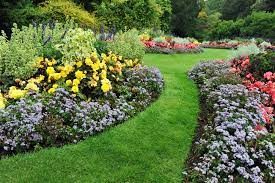
Garden Edging: The Good, the Bad, and the Ugly
Garden edging is one of those things that seems like a small detail, but it can make a big difference in the overall look of your garden. There are a lot of different options out there, so how do you know which one is best for you? In this blog post, we’ll break down the three most popular types of garden edging—wood, stone, and plastic—to help you make an informed decision.
Wood Garden Edging
Wood garden edging is a popular choice because it’s relatively inexpensive and easy to install. You can find wood edging at most home improvement stores. The downside to wood edging is that it doesn’t last as long as some of the other options. It’s also susceptible to rot and insect damage. If you choose wood edging, be sure to buy treated lumber that is rated for outdoor use.
Stone Garden Edging
Stone garden edging is a more permanent solution than wood, but it’s also more expensive. Stone edging can give your garden a classic look that will last for years. The downside to stone edging is that it can be difficult to install, and it’s not as forgiving as some of the other options if you make a mistake.
Plastic Garden Edging
Plastic garden edging is the least expensive option, and it’s also the easiest to install. You can find plastic garden edging at most home improvement stores. The downside to plastic edging is that it doesn’t have the same aesthetic appeal as wood or stone. Additionally, plastic edging can be damaged by UV rays from the sun, so it won’t last as long as some of the other options.
There are a lot of different types of garden edging available on the market today. Wood, stone, and plastic are three of the most popular options. Each type has its own set of benefits and drawbacks. When choosing garden edging for your home, be sure to consider your budget, installation ease, and desired aesthetic before making a final decision.
What type of garden edging is best? Aluminum or steel edging is great for straight-line areas; it won’t rust, rot or become brittle.
What is the cheapest way to do a border edging?
- Surround a pond with sticks.
- Add a nautical twist for cheap with rope edging.
- Line the edges of flower beds with reclaimed materials.
- Recycle old bottles to border pathways.
- Weave your own hazel edge.
What is the easiest landscape edging? No-dig edging is the easiest to install, since all you typically have to do is pound stakes into the ground. On the other end of the spectrum, stone or brick edging will require using mud mortar and sometimes even cutting the stone with an angle grinder to make the joints fit together.
What is the best lawn edging to buy?
- Best Overall. Dimex Landscape Edging Kit EasyFlex.
- Best Value. Landscape Edging Kit Amazon Basics.
- Best Premium Pick. Steel Landscape Edging (5-Pack) EverEdge.
- Best Faux Stone. Plastic Flex- Wall Landscape Edging Garden Elements.
- Best Hardwood Edging.
- Extra Deep Edging.
- Best for Trees.
- Best Paver Edging.